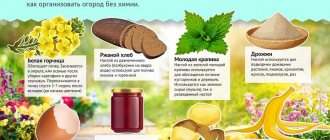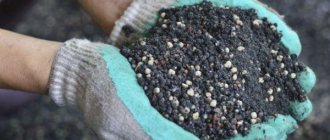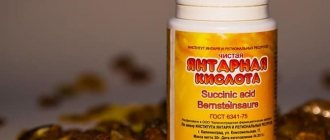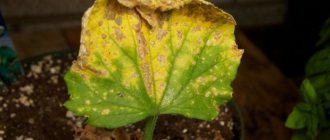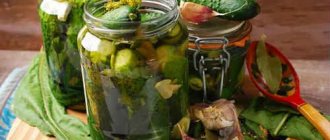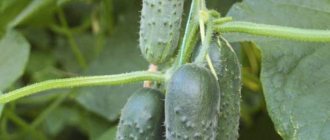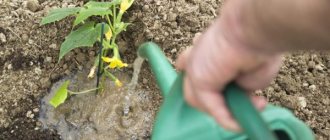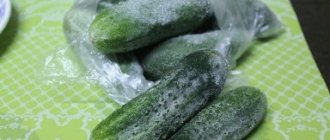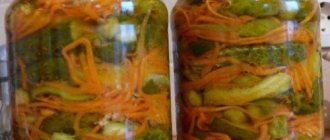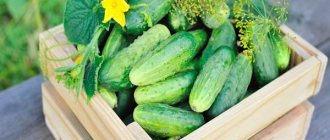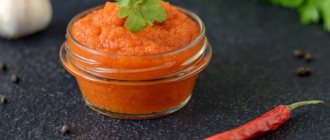With the opening of the summer season, most of our fellow citizens have a lot of problems. When to plant, what to cover, how to protect against diseases - all these are questions that need to be answered. This is not surprising, because everyone wants to get an excellent harvest with minimal use of chemicals. This is why we grow our own garden vegetables, so that they are as natural and healthy as possible. Today we’ll talk about using milk with iodine for cucumbers.
Universal feeding
Are you puzzled? Indeed, many people are surprised by the use of such a valuable food product as irrigation. But it can not only provide the plant with almost all types of nutrients, but also make it unattractive to insects. And the bed with cucumbers is watered more often. Why are they given so much attention? The fact is that the healthiest vegetables, which are a source of potassium, calcium and phosphorus, are also quite whimsical. Therefore, if you are not vigilant, you may simply be left without a harvest.
Why milk
Milk helps solve several problems in growing cucumbers. This is an excellent addition to the diet, a reliable barrier to pests, and immunity from various diseases.
Water the cucumbers with milk. The illustration for the article is used from the site karma-shop.ru
- Milk is a storehouse of nutrients. What it doesn’t have is calcium and magnesium, iron and potassium, nitrogen and phosphorus, manganese and sulfur. And this is not a complete list of useful ingredients. Such a powerful, rich mixture has a beneficial effect on the development of cucumbers and helps them absorb nutrients from the soil.
- Another component of cow's milk - lactose - makes this affordable product an indispensable assistant in the fight against pests and diseases.
- Due to the nature of the digestive system, pests cannot digest lactose. Therefore, milk rivers are a real disaster for little barbarians.
- The thinnest film on the leaves, formed after spraying with a milk solution, prevents pathogens from occupying cucumber plantings.
IMPORTANT!
The ideal option is “raw” low-fat cow’s milk, without boiling, pasteurization or sterilization. Heat treatment destroys most of the beneficial substances.
Protection from diseases
Milk with iodine for cucumbers is both a nutrient solution and an antiseptic. To get a good idea of why this pair was chosen, let's look at their influence individually. Let's start with an inexpensive and accessible component called iodine. In order to prevent various diseases, the use of this antiseptic is justified. Its antifungal effect allows you to quickly and effectively destroy the metabolic processes of pathogens.
But that’s not all, otherwise milk with iodine for cucumbers would not have gained such popularity. Active oxygen, which has a detrimental effect on mushrooms, is produced when iodine and water come into contact.
Features of processing in greenhouses and open ground
You should pay attention to some subtleties.
- If it rains within two hours after spraying, the product will be washed off and there will be no result. If it has time to dry on the leaves, the plants will be safe for a week.
- Air exchange in a greenhouse is not as good as in open ground, so the product should be used less often, approximately once every 14 days.
- To avoid diseases and pest attacks, you can treat not only the shoots, but also the soil, walls and floor of the greenhouse.
A little trick - hang several open bottles of iodine, and you don’t have to worry about the appearance of late blight.
Read how to make a greenhouse and greenhouse for cucumbers from polycarbonate and other materials.
Processing time
Now let's go further and look at the effect of milk on plants, but for now there is one more important point. Cucumbers begin to get sick quite early; pests love to destroy young plants. Therefore, preventive treatment should be carried out even before planting in the ground. And then plant protection must be carried out systematically. It is best to use biomethods rather than pesticides. Milk with iodine for cucumbers is the ideal “drug”, which, on the one hand, is effective and, on the other, safe.
Treatment of cucumbers with brilliant green against downy mildew
Downy mildew or downy mildew is one of the most dangerous fungal diseases of cucumbers. The first symptoms most often appear during flowering and fruiting in the form of yellowish-green spots on the upper part of the leaf and a gray coating with a purple tint on the lower part.
Over time, the spots increase in size and the leaves become brittle and crumble. As a result, the development of fruits slows down, already ripe fruits lose their taste.
The danger of downy mildew is that fungal spores can remain in the ground for several years and infect plants every year. For treatment, use brilliant green. Thanks to the copper contained in the preparation, the solution not only acts as an antiseptic, but also feeds the cucumbers.
The “scientific poke” method
I would like to note that there are no reliable studies that could confirm or refute data on the effectiveness of the product. Moreover, the timing, concentration of the drug and the form of application are selected at random. The use of iodine (in some cases brilliant green) gives a very short-term effect, which means the procedure will have to be repeated quite often. There is one more point: will you like the state of the bed after such a procedure? After all, green bushes with brown spots of iodine look completely unpresentable.
Precautionary measures
Incorrect preparation and non-compliance with the recipe will cause harm instead of benefit. Therefore, you need to be extremely careful.
- It is important to maintain the required proportions and not change the recipe. If there is more milk or iodine than necessary, the consequences will be disastrous and the plants may die. If there are not enough active ingredients, then such a remedy will not give the desired effect.
- Excessive amounts of iodine are harmful to the thyroid gland. Therefore, all work with it must be done wearing a protective mask.
- It is necessary to do a check. After preparing a small amount of the product, test it on one plant and observe. If nothing bad happens after a day, you can continue to use the drug.
- Don't overdo it. For prevention purposes, it is necessary to spray the bushes no more than once every 7 days. Root feeding can be carried out only twice per season.
Effect of milk on plants
Spraying cucumbers with milk and iodine is practiced by many gardeners. At the same time, the majority are guided only by the advice of their comrades and neighbors in their dachas. It is usually recommended to dilute 2 liters of milk in 10 liters of water. You can use whey in the same way, maintaining the proportions. What effect do they have:
- A protein film envelops plant parts and prevents hostile organisms from getting inside the leaf or stem.
- Whey and milk contain complete proteins and minerals. All these elements help increase plant resistance and improve metabolic processes.
What do agricultural technologists say about spraying cucumbers with milk with iodine? The protein film is too short-lived; it is washed off by rain and watering. In order to ensure the desired effect, you will have to repeat the procedure very often. Having calculated the cost of milk, as well as the time spent, we can conclude that the procedure is too labor-intensive. However, experts in the field of agricultural technology do not deny that feeding cucumbers with iodine with milk is an effective means of combating certain diseases, in parallel with the addition of nutrients.
Treatment with soda for gray rot
Gray rot is a bacterial disease that affects all plant organs. It appears in the form of gray or brown spots, which increase in size over time and completely cover the leaves, fruits and stems with a gray coating. Large amounts of moisture contribute to the development of the disease.
Kitchen soda helps to deal with gray rot. Preparation for spraying cucumbers against diseases with soda Treatment of cucumbers with soda is carried out with a weak solution (75 g of soda is dissolved in a 10-liter bucket of water). Plants are sprayed every three days.
Against root rot
The causative agents are fungi that live in the soil and reproduce under favorable conditions. Rot usually does not appear immediately, but over time. The lower leaves turn yellow, the ovary dies, the roots turn brown and the plant dies. In this case, a regular antiseptic solution will help. To optimize the treatment procedure, it is combined with the addition of nutrients. As a result, feeding cucumbers with iodine and milk is born.
To perform the procedure, you need to prepare a working solution. Take a liter of milk (yogurt or kefir, whey will do) and add a tablespoon of liquid soap and 30 drops of iodine. Pour 10 liters of water, you get a working solution that can be sprayed on cucumbers once every 10 days.
Features of application
Milk is used unheated, because during pasteurization or sterilization most of the vitamins are destroyed. As a result, the product loses its effectiveness.
Do not pour the solution under the root. Make a funnel around the bush at a distance of 10-15 cm, after which liquid is poured into it. Cucumber roots are located close to the top of the soil and will be able to absorb beneficial moisture from there. Watering is carried out only after a day.
Spray the leaves either in cloudy weather or after sunset so that the plant does not get burned.
Treatment or prevention
Does treating cucumbers with iodine and milk help get rid of the symptoms of the disease? Reviews emphasize that this remedy is more suitable for prevention. Timely processing helps protect the crop from the spread of root rot and spores of parasitic fungi. This, in turn, is the prevention of powdery mildew and bacteriosis. But if you already see obvious signs of damage on your plants, then you will have to use modern drugs. You can spray the cucumbers with milk and iodine after the danger has passed.
Reviews
Ivan, 29 years old, Ukraine
“One of my good friends has been processing cucumbers with milk for a hundred years. She worked as an agronomist during Soviet times. Their dacha always produces more cucumbers than their neighbors.”
Vladimir, 32 years old, Moscow region
“All my friends have gotten used to watering their cucumbers with whey, there are benefits, the cucumbers receive nitrogen nutrition. It is provided by amino acids and peptides. In addition, whey contains lactic acid. Thanks to it, the soil is slightly acidified, making it easier for cucumbers to consume microelements. Lactose, which is present in whey, enhances the growth of microorganisms, and they, in turn, improve the consumption of microelements.”
Antonina, 40 years old, Minsk
“My neighbor in the country waters her cucumbers with milk diluted with water. She likes cucumbers too, they never get sick.”
Advantages of the solution
As usual, agricultural technicians have their own truth, and summer residents have theirs. And practical experience says that treating cucumbers with iodine and milk also has advantages. Reviews suggest that the plants become greener, the trunks are thicker, and the harvest is more massive. At the same time, processing costs are very small.
This plant spray eliminates the need for chemicals. This is precisely the task that most summer residents face, otherwise it would be much easier to buy a bag of universal chemical in a store. Irrigation is recommended for the following reasons:
- These two substances can reduce the risk of certain diseases, in particular powdery mildew.
- Milk improves the immunity of green organisms, which contributes to increased productivity.
- The plant is saturated with useful microelements.
- When using this mixture, the cucumber vine does not turn yellow or fall off.
This product is natural and safe, can be prepared in seconds, and is inexpensive.
What does iodine deficiency cause in plants?
The element is necessary for several processes occurring in plants at once. Vegetable growers feed the crop with iodine because it helps absorb nitrogen. If this element is poorly absorbed, then the cucumbers will be weak and it will not be possible to save them from diseases.
Antiseptic is one of the components of proteins. In addition, thanks to it, plants “breathe”, as a result of which the immune system is strengthened. In this case, photosynthesis proceeds faster if iodine is present in the tops and roots. Therefore, it is important to prevent its deficiency in plants.
Most often, element deficiency can be seen in the following types of soil:
- sandy and sandy loam – useful microelements quickly penetrate into the lower layers of the soil;
- peat bogs – characterized by an increased level of acidity;
- podzolic;
- poor in organic matter - the acidity level is also low.
Attention!
Lack of iodine is least likely in black soils and in areas close to the sea. In the second case, the element is present in the air, so the crop receives it in the required quantity.
It is better to apply milk solutions with iodine in autumn and spring.
Recipe
Spraying cucumbers with milk and iodine is not at all difficult; you just need to prepare a working solution and arm yourself with a spray bottle. So, take a large bucket, add 20 g of laundry soap and a liter of milk, warm water and 30 drops of iodine. If the treatment area is large, then it is necessary to increase the amount of solution used.
The second version of the recipe helps if the plant begins to turn yellow and become stained. Then, instead of laundry soap, add a tablespoon of urea and baking soda. The affected leaves should be removed and the lashes should be watered well on all sides. In just two weeks you will see that the plant is putting out new leaves and will soon begin to bloom.
Tips from Mister Summer Resident
Our portal https://mrdachnik.com advises:
- Use only low-fat milk. Excess fat remains on the leaves and stems, forming a film that will prevent the penetration of oxygen and beneficial microelements.
- Do not use milk from the store. Sterilization and pasteurization deprive milk of nutrients.
- Whey or kefir are good alternatives to milk.
- The best time for foliar treatment is evening or cloudy weather.
- Before root feeding, plants must be thoroughly watered. This must be done the day before. This measure will protect against burns on the roots.
- All procedures should be carried out only after five true leaves appear on the plants. The only exception is a mixture of milk, water and iodine.
- The largest amount of solution should be left on the lower leaves, where treatment begins.
- The solution is not stored for a long time, so processing must begin immediately after the mixture is ready.
Expected Result
Processing cucumbers with milk and iodine is carried out in good weather, without rain or strong wind. Once on the leaves, the antiseptic exhibits properties, destroying pathogenic organisms. At the same time, milk forms a transparent protective film that prevents the penetration of pests. The only point: you should not use homemade milk, or skim the cream off it. Excess fat will prevent oxygen penetration. You can replace milk with whey, but it contains fewer nutrients. Treatment of cucumbers with milk with iodine should not be carried out if the plant has already been affected by the disease. In this case, you will need stronger products that can be purchased at a specialty store. In recommended quantities, these drugs are not dangerous.
The benefits of milk with iodine for cucumbers
The composition based on iodine and milk is used as a prophylaxis against various diseases and harmful insects.
Useful properties of milk
Milk softens the effect of the antiseptic, which in its pure form can harm plants.
- For most fungi, bacteria and viruses, lactose contained in milk is intolerable, which leads to their rapid death.
- Also, thanks to milk fats, a protective film impenetrable to damage is formed on the green mass of plants.
- Milk contains a large number of useful substances that promote the growth and development of vegetables.
- When cucumbers are treated with a milk composition, a larger number of fruiting ovaries are formed on the plants.
Important! Spraying of cucumbers is carried out only with a dairy product diluted with iodine. Full-fat, sterilized or pasteurized milk can cause irreparable damage to plants.
Useful properties of iodine
The antiseptic helps strengthen the natural immunity of the vegetable crop.
- Thanks to iodine, cucumbers are able to restore damaged stems and leaf blades.
- The antiseptic also stimulates the growth and development of plants.
- Affects the taste of ripening fruits. Vegetables become sweeter and tastier.
- Helps increase productivity.
- Provides rhizomes with necessary macro and microelements.
According to experienced vegetable growers, treating vegetable crops with a solution of milk and iodine reduces the need to use additional fertilizers.
Top dressing
Previously, we talked about treatment to protect against late blight. However, watering cucumbers with milk with iodine differs from spraying, because the solution acts as a natural fertilizer. It is prepared in a slightly different way. For 10 liters of water you need to add four glasses of low-fat milk and 15 drops of iodine. This is done with the aim of strengthening plants and early prevention of fungal infections.
Watering cucumbers with milk and iodine is done when planting in the ground, and then repeated at the beginning of fruiting. Now you can carry out the procedure regularly, but not more than twice a week. Systematic use of this solution allows you to do without chemicals in your summer cottage and get the healthiest vegetables. Have a good harvest and delicious preparations.
What milk to use for feeding cucumbers.
It is best to use raw milk for processing cucumbers. A product that has undergone pasteurization, and even more so sterilization, does not bring the desired result, because during its heat treatment all useful microelements are completely destroyed. In this matter, you cannot trust manufacturers who claim otherwise.
It is also not recommended to use whole milk with a high percentage of fat content. It will do more harm to cucumbers than it will benefit.
Depending on what goal the gardener sets for himself, milk is diluted with water in a ratio of 1:5 or 1:10.
Milk feeding recipe.
If there is a need to feed cucumbers, then 1 liter of medium-fat milk is diluted in 5 liters of water. Water so that each bush of the plant receives an optimal dose of 0.5 liters of milk fertilizer.
Remember! Do not water cucumbers directly at the root. This will lead to the development of gray rot - a disease to which the cucumber crop is very susceptible. Follow our advice and do the following: before you start fertilizing, make a small groove around the circumference at a distance of 10-15 cm from the stem and evenly distribute (pour) the fertilizing. This distance will be enough for the cucumber roots to absorb all the beneficial substances and microelements.
You can spray the plants from above with the same solution. During the spraying process, the leaves will absorb the milk solution, providing themselves with additional protection from pathogens and pests.
Using a spray solution.
Many people use milk solution as a prophylactic treatment because they know how difficult, and sometimes ineffective, it is to fight the disease. Common diseases of cucumbers include true and downy mildew. If the summer is rainy and cool, then these diseases begin their destructive activity especially rapidly.
Including excessive fertilizing with nitrogen-containing fertilizers is a provocateur of the disease. It becomes visible how the leaves of the cucumbers become covered with white spots, as if they were sprinkled with flour, then they slowly begin to turn yellow, become lethargic and die.
The first treatment of cucumbers with the solution should take place when 5-6 true leaves develop on the stem. Then treatment should be carried out regularly once every 2 weeks to avoid disease. An outbreak of the disease can be completely prevented if you follow our advice.
